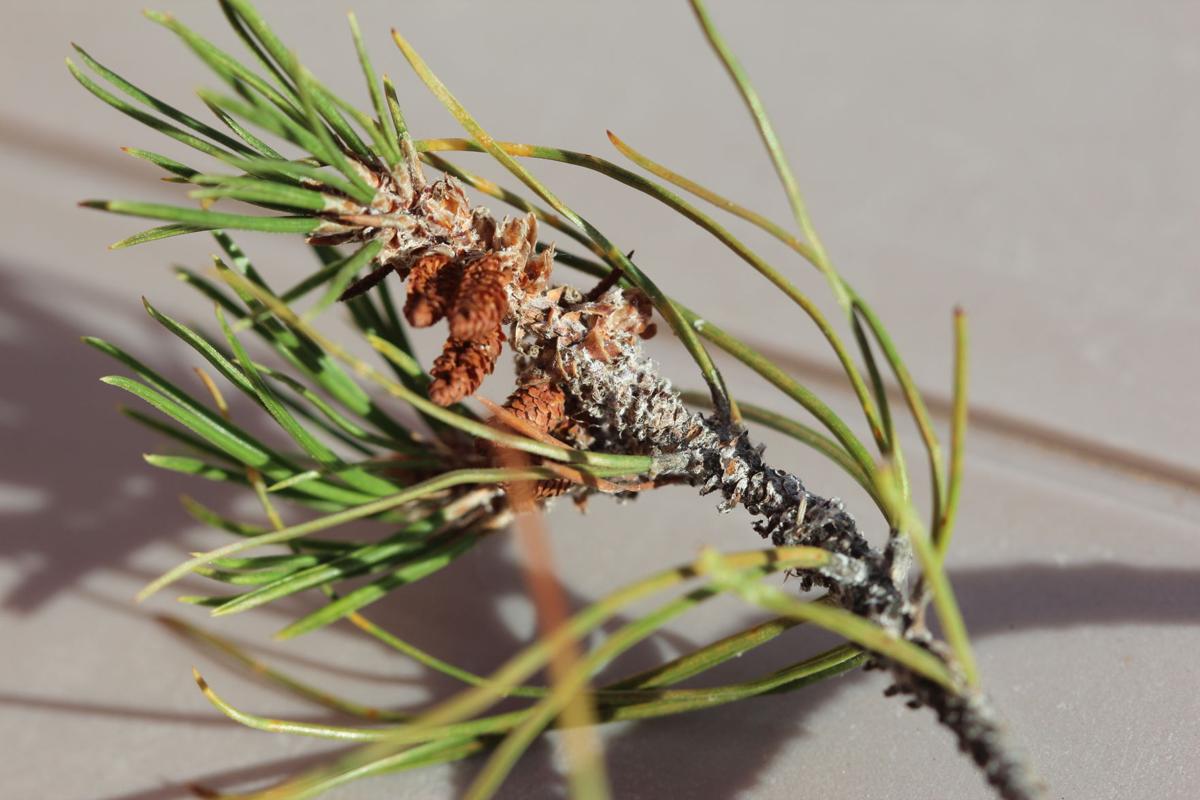Q: I have a number of Afghan pines that have some whitish cottony stuff on the ends of many branches. Can you tell me what this is and if it is a problem?
A: The pine samples I collected show signs of insects in and around where the needles attach to the stem. These insects are called adelgids and they make the white, cottony material to protect them from the environment. High populations can cause yellowing, early drop of needles, drooping and dieback of terminals, and can slow the growth of trees. Vigorous plants tolerate moderate adelgid populations so the best plan is to keep your trees healthy. Appropriate watering and fertilization is important. These trees need deep watering every seven to 14 days in the summer to a depth of 24 to 36 inches. In the spring and fall, water them every 10 to 21 days and in the winter every 14 to 21 days. Avoid excess fertilization and quick-release formulations, which can promote adelgid populations. A forceful stream of water directed at the cottony masses dislodges and kills many adelgids when they are active in the spring.
Peter L. Warren is the urban horticulture agent for the Pima County Cooperative Extension and the University of Arizona. Questions may be emailed to





